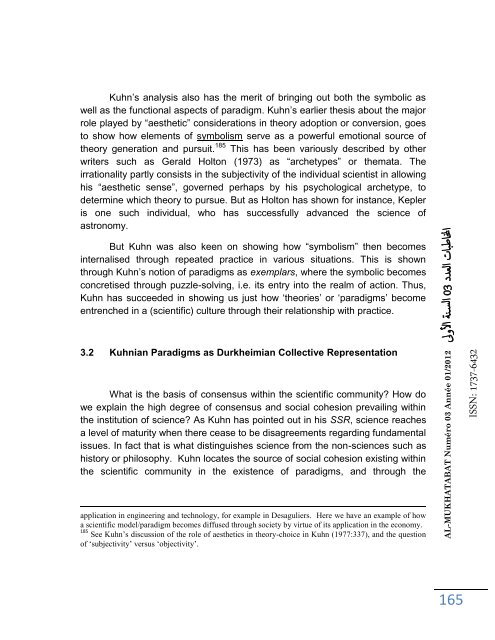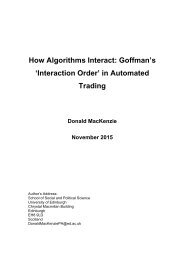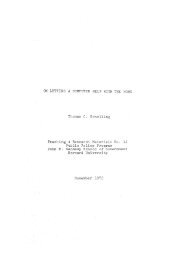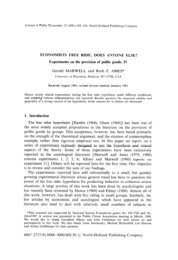n3-al-mukhatabat-journal
n3-al-mukhatabat-journal
n3-al-mukhatabat-journal
You also want an ePaper? Increase the reach of your titles
YUMPU automatically turns print PDFs into web optimized ePapers that Google loves.
Kuhn’s an<strong>al</strong>ysis <strong>al</strong>so has the merit of bringing out both the symbolic as<br />
well as the function<strong>al</strong> aspects of paradigm. Kuhn’s earlier thesis about the major<br />
role played by “aesthetic” considerations in theory adoption or conversion, goes<br />
to show how elements of symbolism serve as a powerful emotion<strong>al</strong> source of<br />
theory generation and pursuit. 185 This has been variously described by other<br />
writers such as Ger<strong>al</strong>d Holton (1973) as “archetypes” or themata. The<br />
irration<strong>al</strong>ity partly consists in the subjectivity of the individu<strong>al</strong> scientist in <strong>al</strong>lowing<br />
his “aesthetic sense”, governed perhaps by his psychologic<strong>al</strong> archetype, to<br />
determine which theory to pursue. But as Holton has shown for instance, Kepler<br />
is one such individu<strong>al</strong>, who has successfully advanced the science of<br />
astronomy.<br />
But Kuhn was <strong>al</strong>so keen on showing how “symbolism” then becomes<br />
intern<strong>al</strong>ised through repeated practice in various situations. This is shown<br />
through Kuhn’s notion of paradigms as exemplars, where the symbolic becomes<br />
concretised through puzzle-solving, i.e. its entry into the re<strong>al</strong>m of action. Thus,<br />
Kuhn has succeeded in showing us just how ‘theories’ or ‘paradigms’ become<br />
entrenched in a (scientific) culture through their relationship with practice.<br />
3.2 Kuhnian Paradigms as Durkheimian Collective Representation<br />
What is the basis of consensus within the scientific community? How do<br />
we explain the high degree of consensus and soci<strong>al</strong> cohesion prevailing within<br />
the institution of science? As Kuhn has pointed out in his SSR, science reaches<br />
a level of maturity when there cease to be disagreements regarding fundament<strong>al</strong><br />
issues. In fact that is what distinguishes science from the non-sciences such as<br />
history or philosophy. Kuhn locates the source of soci<strong>al</strong> cohesion existing within<br />
the scientific community in the existence of paradigms, and through the<br />
application in engineering and technology, for example in Desaguliers. Here we have an example of how<br />
a scientific model/paradigm becomes diffused through society by virtue of its application in the economy.<br />
185 See Kuhn’s discussion of the role of aesthetics in theory-choice in Kuhn (1977:337), and the question<br />
of ‘subjectivity’ versus ‘objectivity’.<br />
AL-MUKHATABAT Numéro 03 Année 01/2012 لىولأا ةن سلا 30 ددعلا تابطانا<br />
165<br />
ISSN: 1737-6432







